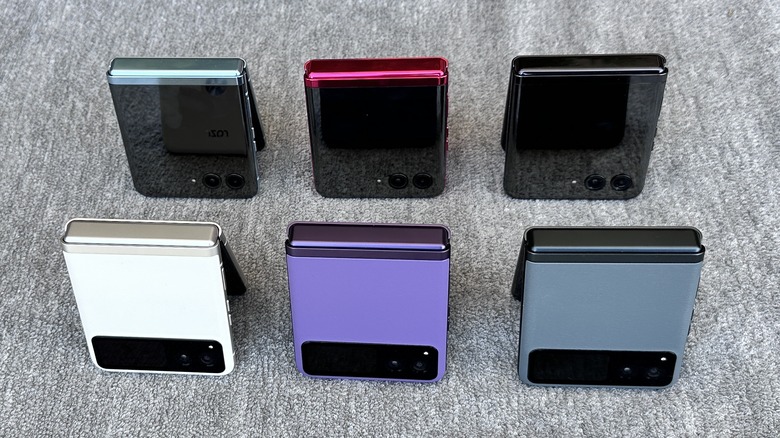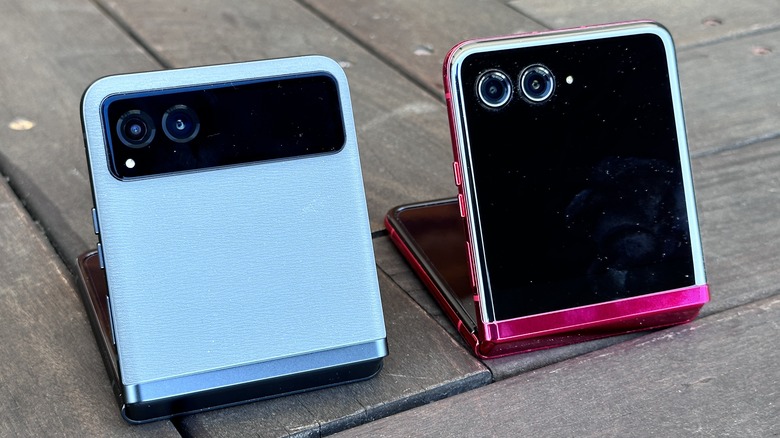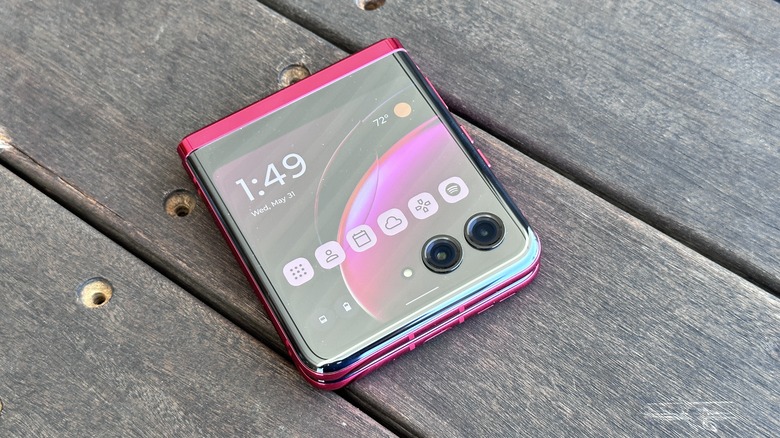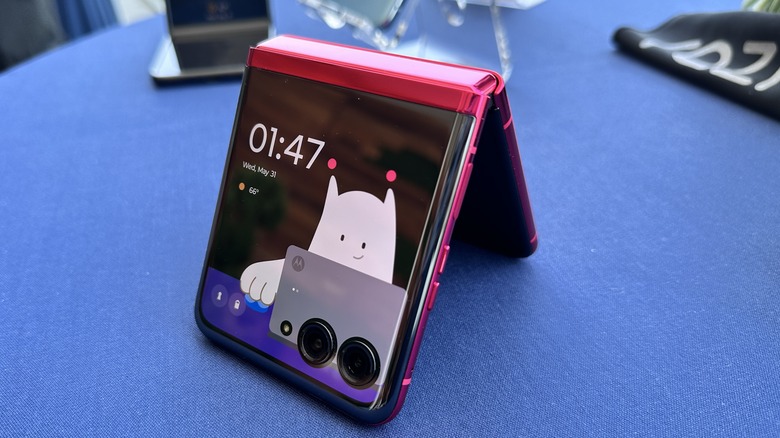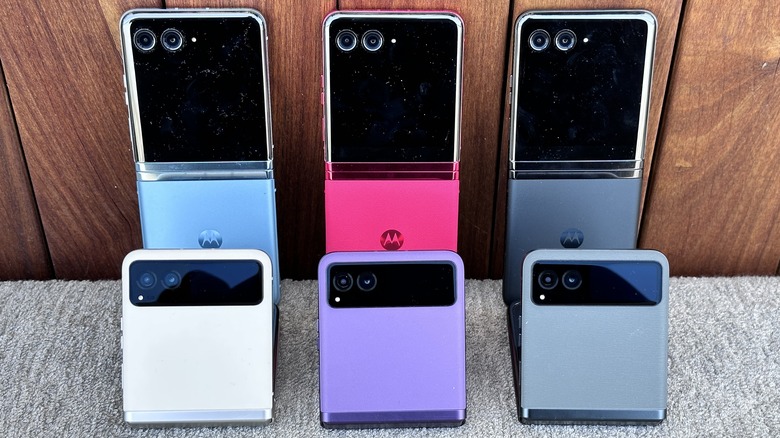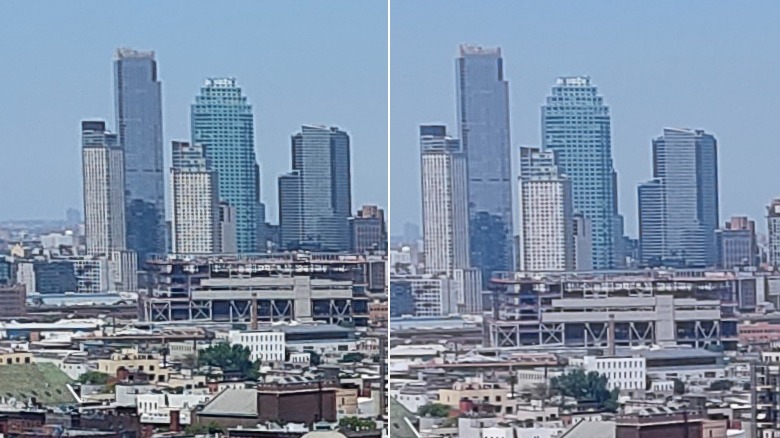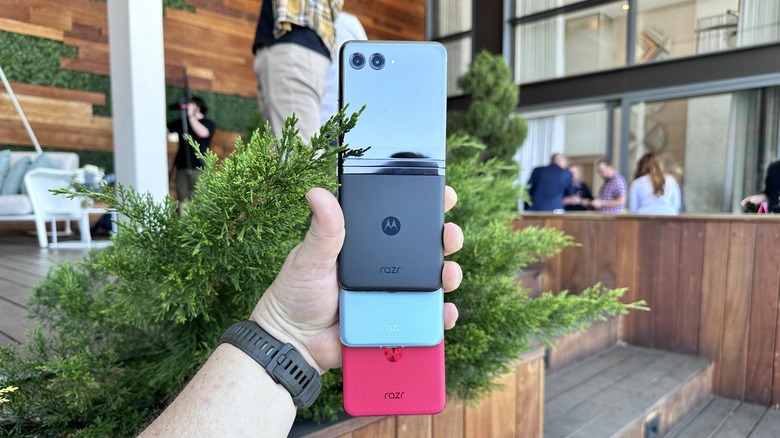Moto RAZR+ Hands-On: The New Dual Screen Standard
In New York City today, Motorola announced two new additions to the RAZR family — the Moto RAZR and the Moto RAZR+. The rest of the world will know these devices as the Moto RAZR 40 and Moto RAZR 40 Ultra, respectively. These two phones were built using the same basic parts, but with a few key differences from each other.
More importantly, these phones are a new generation of foldable that will compete against Samsung in the United States. In some ways, they will measure up to Samsung's dominant presence. In others, it's fair to say Moto will give Samsung a real run for its money. Of course, Samsung will have the opportunity to counter with a big cover screen upgrade later this summer.
In the meantime, Motorola has two new flip-style foldable phones — though you'll only be able to buy one of them this month. However, both were on display in New York where I got to spend some time with them.
Key differences
Right off the bat, the most obvious difference between the two devices is in the external display. The Moto RAZR+ earns its "plus" in this regard: the external display measures 3.6 inches, compared to the base RAZR's 1.5-inch screen. Sticking to the outside, the other notable change is the base RAZR will have vegan leather on the back of the phone, while two colorways of the RAZR+ will be covered with Gorilla Glass Victus on both sides. Only the T-Mobile-exclusive Viva Magenta colorway (which looks closer to red, if you ask me) will sport the vegan leather back panel for the RAZR+.
Inside, the notable differences come in the primary camera, the processor, the storage size, and the battery. The RAZR+ will have a 12MP primary sensor, while the RAZR will have a 64MP shooter. That's not a typo: Motorola says that the difference in camera aperture and pixel size will make the RAZR+ the better shooter at night. We'll see when we conduct our full reviews.
As for storage, the Moto RAZR+ will have 256 GB of onboard storage, while the RAZR tops out at 128 GB. On the power side, the RAZR+ comes with a Snapdragon 8+ Gen 1 processor, while the RAZR comes with a still very respectable Snapdragon 7 Gen 1 processor. Finally, for the battery , the RAZR has a 4,200 mAh battery, while the RAZR+ has a slightly smaller 3,800 mAh power pack.
Using the phone
Motorola has put a lot of thought into how one might go about using the Moto RAZR+, specifically with the much larger external screen — which, when it launches, will be the largest external display on a flip-style foldable. Whether or not Samsung answers back will be discovered later this summer, but all signs point to yes. All the same, the external display is a significant part of the RAZR+ story.
Let's get this out of the way — yes, you can run any app installed on your phone on that external display. While Motorola didn't optimize for every app imaginable, theoretically, you should be able to play "Call of Duty: Mobile" on the external display. Whether or not that is anywhere close to the recommended format is a completely different story. However, Motorola wants to give you the opportunity to try.
If Motorola had its way, users of the RAZR would spend most of their time on the external display, since it can do just about anything the internal screen can do. That being the case, Moto has put a few other optimizations there in the exterior display.
Extras for the external display
In addition to running apps, Motorola has developed a number of panels to display information and quick launch icons on the external display. In addition to an app launcher and favorite contacts, you can get weather, Google Fit, Google News, Google Calendar, Spotify, and games on that screen. Speaking of games, Motorola has built a couple of fun little games that are optimized for the external display — like a maze game, a sideways runner game, and a trail runner game, all of which are remarkably addictive.
Your main panel can display shortcuts to each of those other panels for quicker access, though you can also turn those shortcuts off if you would rather enjoy your wallpaper. Motorola has also built a number of wallpapers optimized for the screen. Naturally, you can set one of your own photos as the exterior wallpaper as well.
Additionally, Moto built in some camera optimizations like the now-standard "use the cover screen as a camera preview" trick. Another fun party trick is the use of cartoon animations on the cover screen to get the little ones to look and smile for the camera. As a parent of two children who once fell into the age range this feature is aimed at, I can't say I'm too convinced that this will actually have the desired effect, but it certainly couldn't hurt.
About those cameras
Both phones have a dual camera setup on the back, and a single selfie camera on the front, offering the same selfie and wide-angle cameras. As mentioned previously, only the main shooter is different between both phones. I took the opportunity to shoot a quick set of photos on the balcony at the Moto event to get a preview of how the cameras will work.
Before I get into it though, I should mention that both phones, and especially the RAZR were running pre-production software, so these results are not necessarily the same as what you'll get from the phone when it ships.
In these photo samples, the Moto RAZR is on the left and the Moto RAZR+ is on the right. Both have been enlarged to 100% crops. Both photos are perfectly fine in these optimal lighting conditions, but interesting enough, you actually get a bit more detail out of the RAZR's larger camera sensor. Specifically, the windows in the buildings are a little more clear and well-defined than what you get from the RAZR+.
Moto uses the wide-angle camera as a macro lens (left), and as you can see, the camera can pick up a lot of detail in the foreground, but the background is pixelated and messy in a generally unappealing way. I actually got a better macro shot using the main lens (right) with better bokeh in the background.
As for the selfie camera, both phones perform very well when there's good lighting (left). For one series of shots, I took selfies with a strong backlight, and the HDR gave everything in the background a weird greenish hue. Moto might have to work on the color science for those HDR shots, and we'll see when our full review comes out later this month.
Final thoughts
Speaking of later this month, the Moto RAZR+ goes up for preorder on June 16 for $999.99 at Amazon, BestBuy, motorola.com, and AT&T and T-Mobile as carrier partners. In fact, T-Mobile will get the exclusive Viva Magenta colorway, which is particularly striking. The unlocked model will work on Verizon's network, however, there is no millimeter wave compatibility.
Pricing and availability for the RAZR have not yet been released, though details will be released "in the coming months." That being said, the fact that the more premium RAZR+ is launching at $999 suggests that optimism might be in order for the less expensive variant. That's a good thing: despite the fact that the RAZR has a smaller outer display, getting foldables down to a more attractive price point can only be a good thing for buyers.
While battery life is a close second, price is a primary obstacle for foldables. It makes sense that the RAZR+ with the more capable outer display has a smaller battery, because it frankly doesn't take as much juice to power up that smaller display. Meanwhile, you can still get a lot done on the smaller outer display of the RAZR, but you'll naturally be forced to open the phone more frequently.
All of this will have to wait for our full reviews of the phones coming up, but for now, it's easy to say that Motorola is making an aggressive push into the foldable space — and giving Samsung something to think about.
